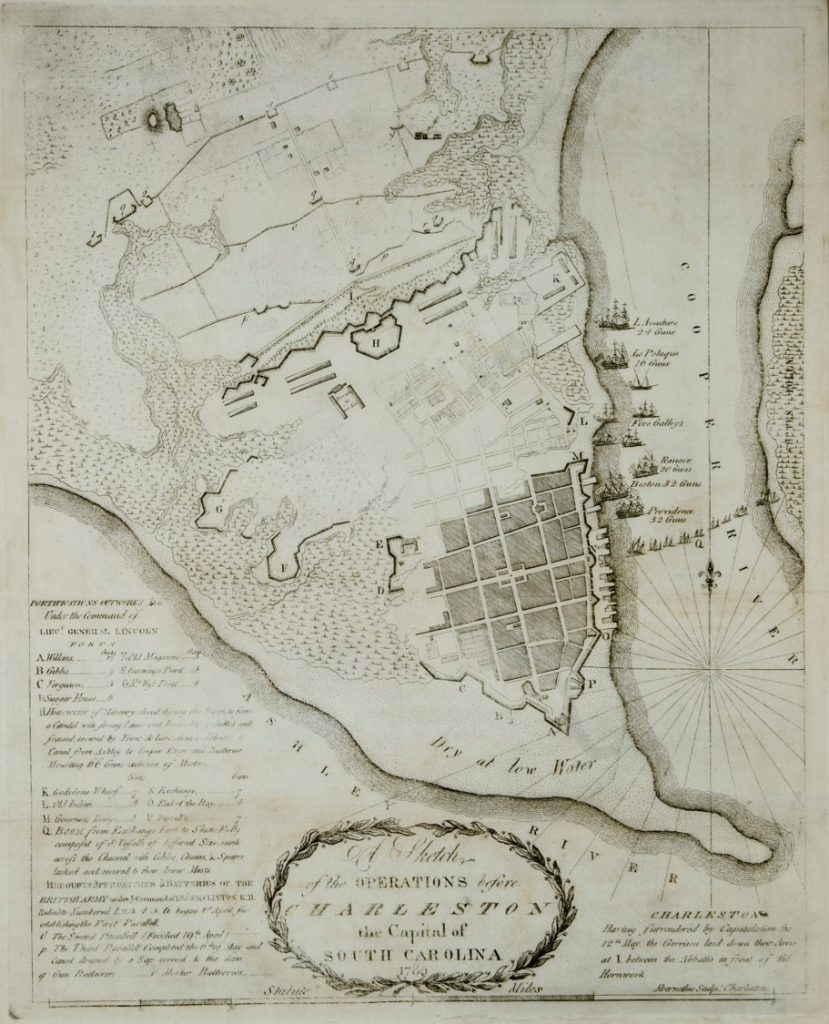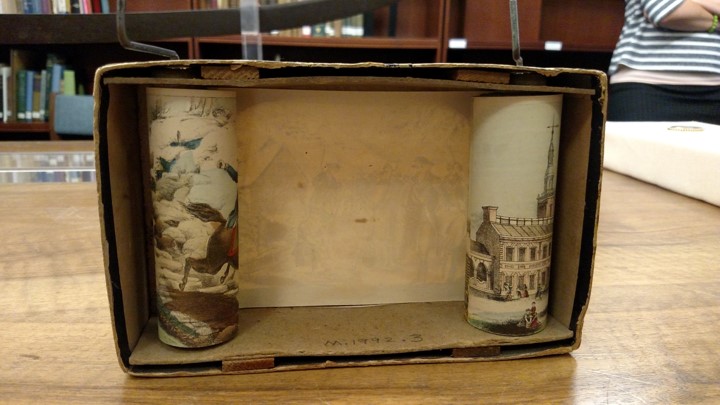31st Annual National Conference for History Education Conference
virtual
April 8, 2021
This session, What a Nineteenth Century Educational Toy Can Teach Us About Capturing Place, Time and Historical Memory, focused on the use of primary source objects to demonstrate how events from America’s War for Independence have been visually preserved for historical memory, and how those memories have contributed to America’s national identity—and featured the American Revolution Institute’s “historiscope” and a lesson plan developed by one of our master teachers. The historiscope is an educational toy from the mid-nineteenth century comprised of scrolling lithographs depicting scenes from the American Revolution and other events in early American history.
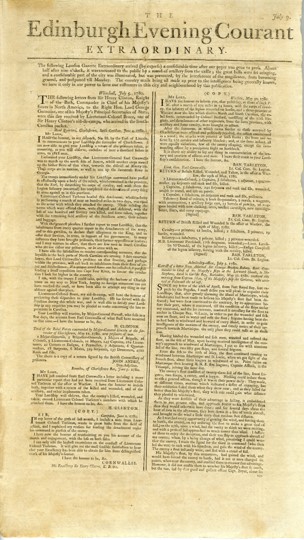
Edinburgh: Printed for Fleming and Ramsay, July 9, 1780
The Society of the Cincinnati, The Robert Charles Lawrence Ferguson Collection
This newspaper announces the fall of Charleston, South Carolina, to British forces and includes Sir Henry Clinton's June 4, 1780, letter from Charleston.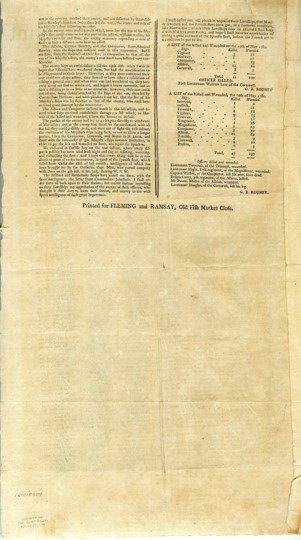
Edinburgh: Printed for Fleming and Ramsay, July 9, 1780
The Society of the Cincinnati, The Robert Charles Lawrence Ferguson Collection
This newspaper announces the fall of Charleston, South Carolina, to British forces and includes Sir Henry Clinton's June 4, 1780, letter from Charleston.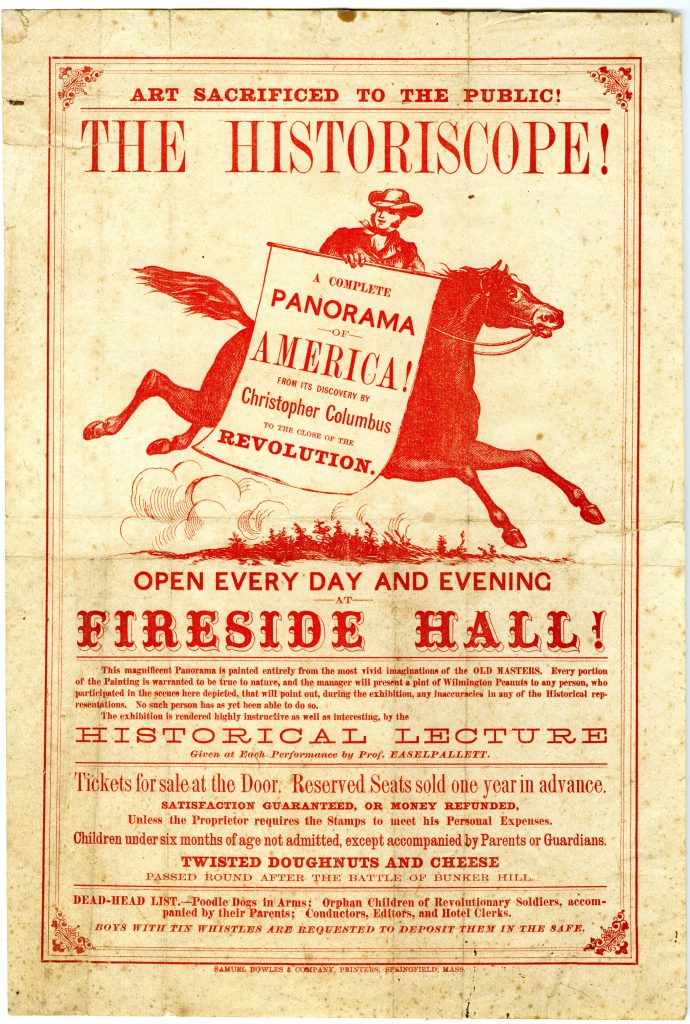
Art Sacrificed to the Public! The Historiscope!
Springfield, Mass.: Samuel Bowles & Co., printers, 1868The Society of the Cincinnati, The Robert Charles Lawrence Fergusson Collection
This satirical broadside accompanied the toy and was intended to advertise "performances." Also included were admission tickets and a script to be read to the audience.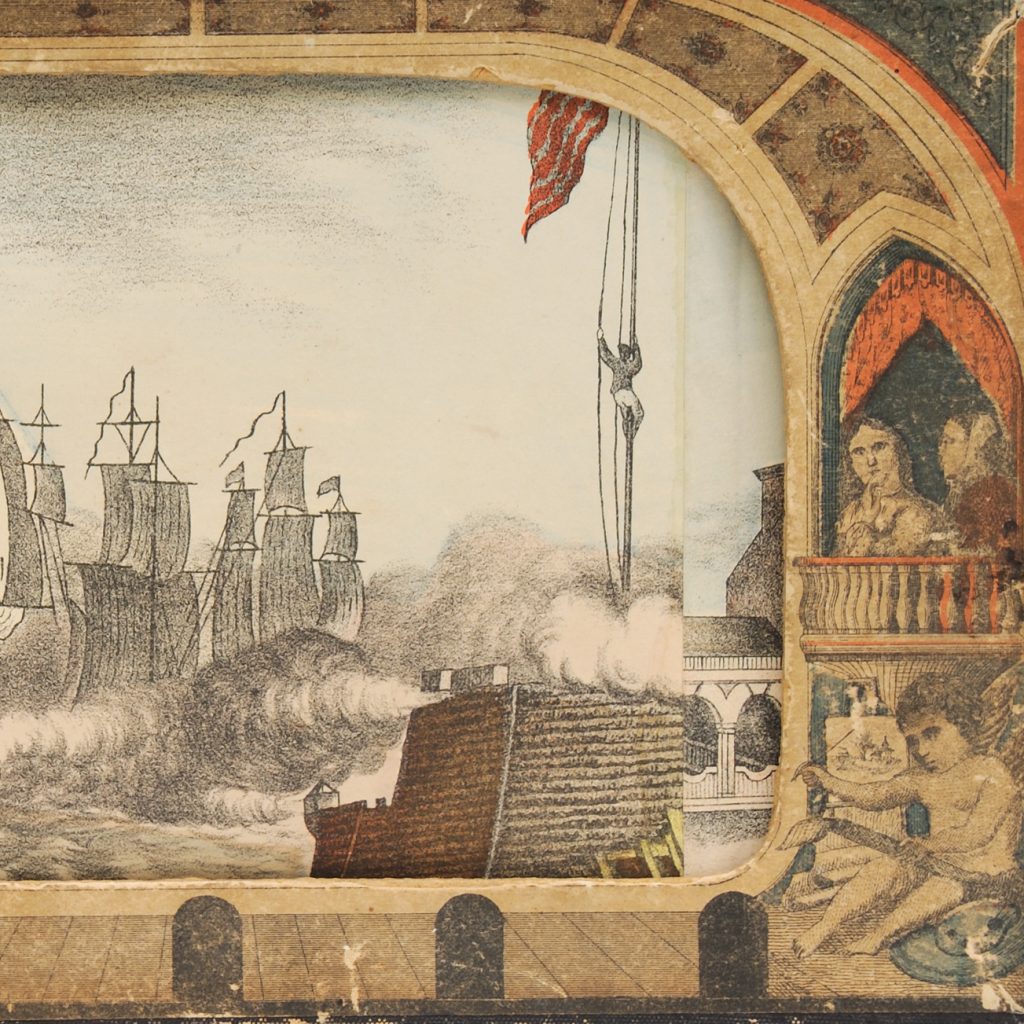
"The Historiscope: A Panorama & History of America" [Fort Moultrie]
Milton Bradley & Co., Springfield, Massachusetts
ca.1860-1890The Society of the Cincinnati, The Robert Charles Lawrence Fergusson Collection
This toy consists of a scrolling set of twenty-four hand-colored lithographs set into a theatrical background. A child would present the images to their family as a show, using a script that accompanied the toy. Half of the scenes depict heroes and events of the Revolutionary War, reflecting what mid-nineteenth century Americans celebrated from the nation's founding. This scene depicts the 1776 British attack on Fort Moultrie in South Carolina.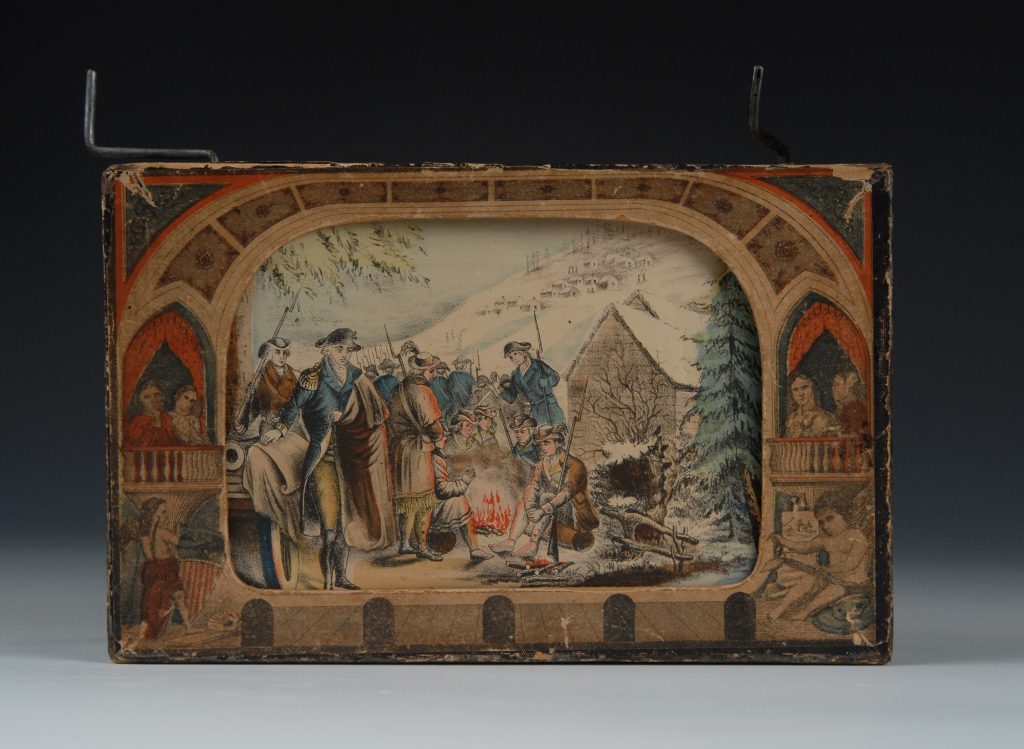
"The Historiscope: A Panorama & History of America" [Valley Forge]
Milton Bradley & Co., Springfield, Massachusetts
ca.1860-1890The Society of the Cincinnati, The Robert Charles Lawrence Fergusson Collection
The accompanying script reads, "In December 1777, Washington took up his Winter quarters at Valley Forge, and with rude huts for shelter, often times destitute of food, without blankets for the night, or sufficient clothing, the Patriot army passed the darkest hours of the Revolution."download pdf version of presentation
